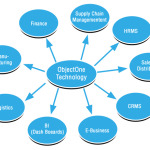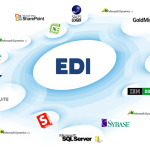Building Vs Buying Software: What’s Best for Your Enterprise?
Companies frequently face the dilemma of deciding between custom-developing software in-house to meet unique business needs and purchasing a pre-existing solution from a reliable vendor. Opting for a custom-built approach might offer a perfect fit for specific challenges. Yet, it usually demands a significant investment of resources, including budget and staff, for its development, deployment, and ongoing maintenance. On the other hand, partnering with a trusted supplier to implement a tested solution can expedite the technology’s adoption by end-users and typically ensures more extensive support during its operational life.
Understanding the Basics
- Custom-built software refers to software applications developed to meet the specific needs of a business or organization. This option offers tailored solutions but requires significant time and investment.
- Commercially available solutions are pre-made applications available for purchase or subscription. They are ready-to-use solutions designed to cater to the general needs of businesses.
Build It Or Buy It?
Many managers make the mistake of viewing new projects as standalone business process ventures, not realizing these efforts are likely to evolve into continuous initiatives. Often, a department will spot a particular issue and look to its internal IT team for a solution. At a glance, this strategy seems logical, especially for projects with a clearly defined scope. Yet, intricate business processes frequently cross departmental boundaries and require cooperation with external partners.
Also read this: Ways to Ensure Reliable & Ethical Use of Generative AI
Typically, a company’s core competency lies in something other than creating B2B software solutions. So why allocate extensive hours and resources, including your top talent or the effort to recruit additional staff, to devise a solution that already exists and has been validated in the marketplace? Vendors specializing in these areas have often addressed similar challenges, offering their clients the advantage of best practices developed through a wide range of experiences.
Seeking solid reasons to opt for a commercial solution? Consider calculating the upfront costs of in-house development along with the continuous expenses for maintenance. When you choose a vendor, they take on the responsibilities of product development, quality control, upkeep, upgrading platforms, and applying fixes. Meanwhile, developing a solution internally often entails ongoing work well past the initial project’s scope. Typically, a vendor gains efficiencies of scale due to its extensive customer base, allowing it to offer the implementation and upkeep of a proven product at a lower cost than maintaining a bespoke, internally developed application.
Additionally, being a customer of a commercially available solution means that your primary users can contribute suggestions for regularly released new features crafted through broad collaboration with the provider’s entire user community. Commercial solutions are designed with a diverse user base, encompassing various levels of technical proficiency, making these systems more accessible and easier to use. The vendor’s team will assist in implementing the solution, handling ongoing maintenance, and rolling out updates. Plus, the benefit of having customer support should be noticed!
Here’s a concise comparison:
Aspect | Building Software: In-House Development | Buying Software: Commercial Solutions |
| Deployment | Ease of deployment | Faster deployment |
| Technology & Customization | Freedom in technology choices; Tailored customization | Limited control; May not fully meet specific needs |
| Costs | Significant initial & ongoing costs | Lower upfront costs; Continuous product improvements |
| Time | Time-intensive to develop | Reduced development time |
| Flexibility & Control | Greater flexibility; Potential revenue from outsourcing | Limited autonomy; Integration challenges with existing systems |
| Resource Management | Requires recruiting & training | Decreased risk; Variety of options |
| Skill Enhancement | Enhances developer skills & communication | — |
| Organizational Asset | Becomes a valuable asset | — |
| Risk & Maintenance | Ongoing maintenance required | Outsourced maintenance; Potential for delayed updates |
| Communication | — | Possible challenges in vendor communication |
| Security | — | Potential vulnerabilities with critical data |
Technical Criteria To Consider
Evaluating technical aspects is crucial when choosing software, focusing not just on cost but on features that enhance usability globally for both internal and external stakeholders:
Configurable Templates: Software with customizable fields, layouts, and workflows can be deployed more swiftly and cost-effectively. Rigid, hard-coded applications often lead to lower satisfaction and increased costs over time due to the necessity of involving IT for updates.
User-Friendly Design: The success of an application hinges on its ease of use. Solutions designed to focus on intuitive interfaces for all users can significantly reduce the need for extensive training.
Single Sign-On (SSO): SSO capabilities simplify the management and support of user access, enhancing efficiency. Incorporating role-based access control tied to an organization’s LDAP ensures a secure and streamlined user management system.
Robust Security: For applications accessible beyond a company’s firewall, scalable security measures are essential to protect and manage access for a vast user base worldwide. Implementing a CDN and WAF enhances security and system responsiveness, guarding against unauthorized access.
Seamless Two-Way Integration: Compatibility with existing enterprise platforms like ERP, QMS, PLM, and CRM is crucial for smooth operation and data integrity, ensuring that the new system enhances, rather than disrupts, business processes.
Advanced Data Management: Modern data lakes facilitate rapid data analysis. At the same time, machine learning technologies empower organizations to predict future trends and identify potential disruptions by analyzing behavioral changes.
Final Thoughts
Choosing between building or buying software should align with your business goals, financial capacity, and long-term strategic plans. By carefully considering your needs and evaluating the pros and cons of each option, you can make an informed decision that positions your business for success in the digital age.


![[New Post] Answer these 14 Questions to become a Great Marketer](https://alliedc.com/wp-content/plugins/wordpress-23-related-posts-plugin/static/thumbs/4.jpg)




